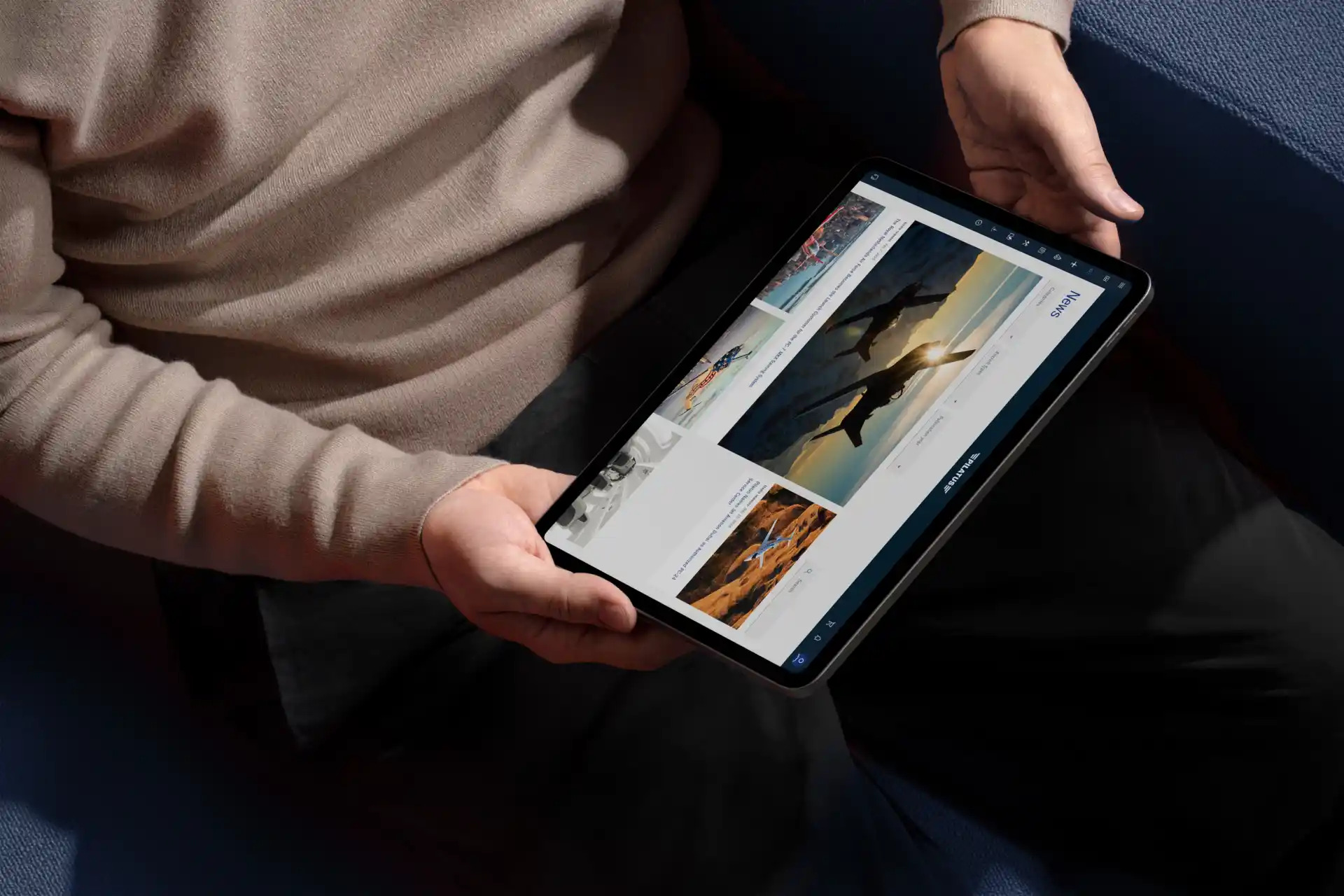We were delighted to see the Royal Flying Doctor Service of Australia (RFDS) return to us again as a customer when the PC-24 was launched. That was the start of a four-year project to design and install a latest-generation custom medevac interior for the RFDS.
The RFDS has operated a fleet of PC-12s since 1995. The organisation currently runs a total of 35 PC-12s, providing patients with round-the-clock health care right across the Australian continent. Like the PC-12, the PC-24 comes with a large cargo door, short take-off and landing capability and can also be used on unpaved strips. These qualities make both models an excellent choice for medevac missions. Pilatus joined forces with a Swiss company, Aerolite AG, to design and build a PC-24 medevac interior to meet the exceptional mission requirements of the RFDS.
From initial concept to final design – the development process
The PC-12 with room for two patient stretchers provided the basis for the RFDS PC-24 cabin configuration. The latter’s larger cabin and enhanced performance permit up to three stretchers, thereby extending the scope of possible missions. In the summer of 2016, the first PC-24 medical interior emerged based on a catalogue of system specific requirements, and this subsequently advanced to final design phase via a series of process steps. Crucially, the design phase included a wooden mock-up of the cabin complete with original-size doors and windows to enable various design-related verifications. Tests were performed to ensure e.g. that the stretchers would indeed fit through the cargo door. The feasibility of rapid configuration changes from three to two stretchers with seating for additional staff was also checked.
Production and approval
Final design approval was obtained in May 2017. With the relevant designs and documentation complete, production of individual interior components got underway. All systems had to be approved by the European Aviation Safety Agency (EASA) requiring the drafting and submission of certification plans and reports. Certain components such as the stretcher lift, for example, also had to undergo specific testing.
Parallel to this, Pilatus produced the PC-24 with serial number 105, which was configured and flown without interior. Work on installing the special interior – lasting a good six months – got underway in Stans in summer 2018. The hard work and untiring efforts of the Aerolite and Pilatus teams ensured that “S/N 105” was completed by early November. High-tech oxygen and vacuum systems were installed for all-round patient care during the flight. A separate power supply ensures reliable operation of the medical equipment required to monitor and sustain patients in the air. A suite of systems which are entirely independent of the cockpit enable permanent communication between the airborne medical crew and hospitals and ambulance services. The electric lift installed at the cargo door ensures safe, comfortable horizontal loading and unloading of patients on stretchers designed especially for the PC-24.
All verification flights were successfully completed in Switzerland following the EASA approval for the medevac configuration on 9 November 2018.
G’Day Australia
The big day finally arrived on 26 November 2018 when Rebecca Tomkinson, CEO of RFDS Western Operations, was presented with the key to the first medevac PC-24 at the handover ceremony in Stans. Visibly impressed by the size of the aircraft and the quality of the interior, she announced that the PC-24 “will deliver a substantial improvement in the health care available to the people of Australia”.
The PC-24 took off for Australia the next day for an intensive December programme of training flights with pilots and medical crews in preparation for entry into service. Initial feedback has been very positive, providing extra motivation for the teams in Stans tasked with the completion of two other medevac PC-24s – including one for RFDS Central Operations.

